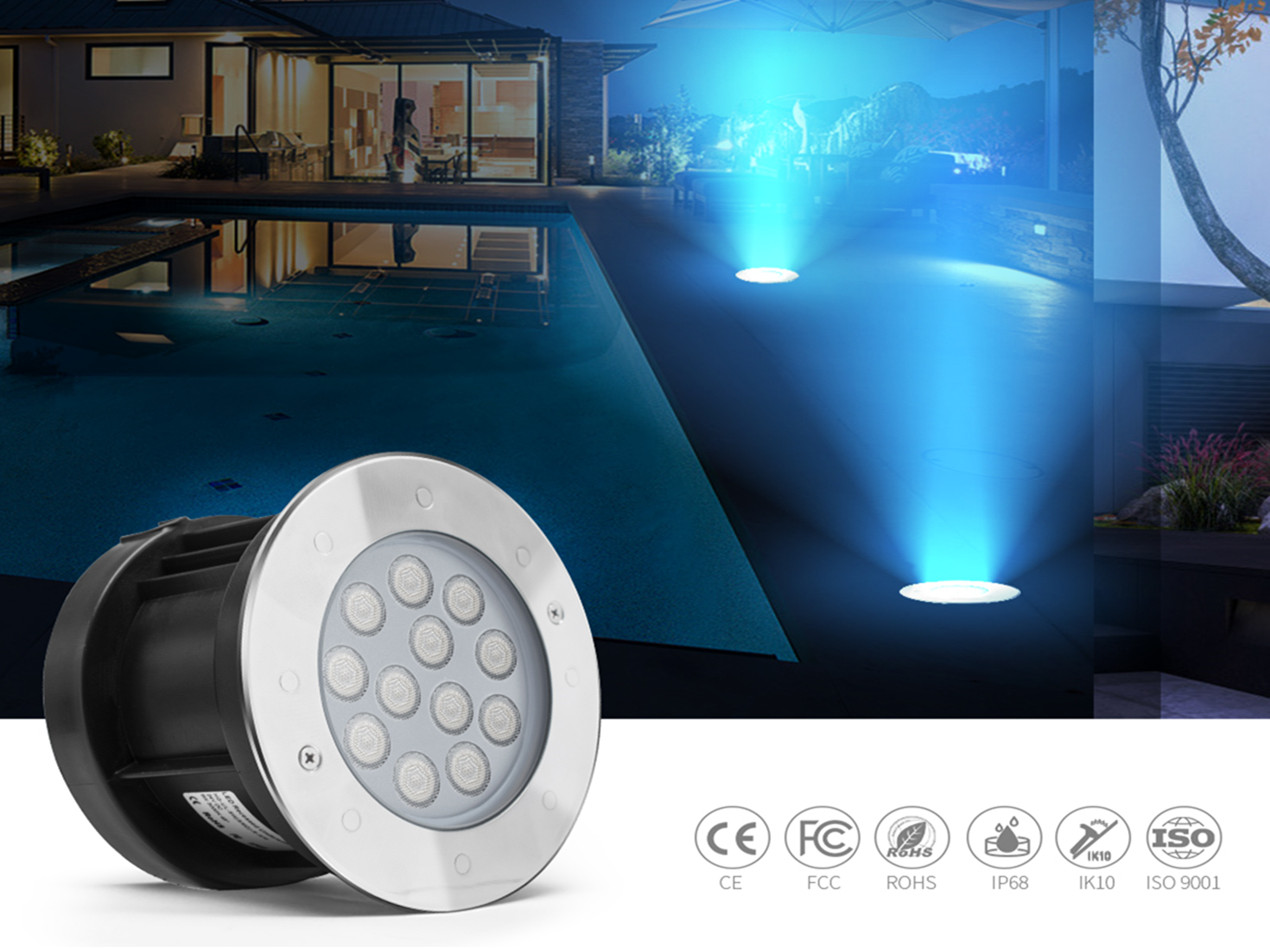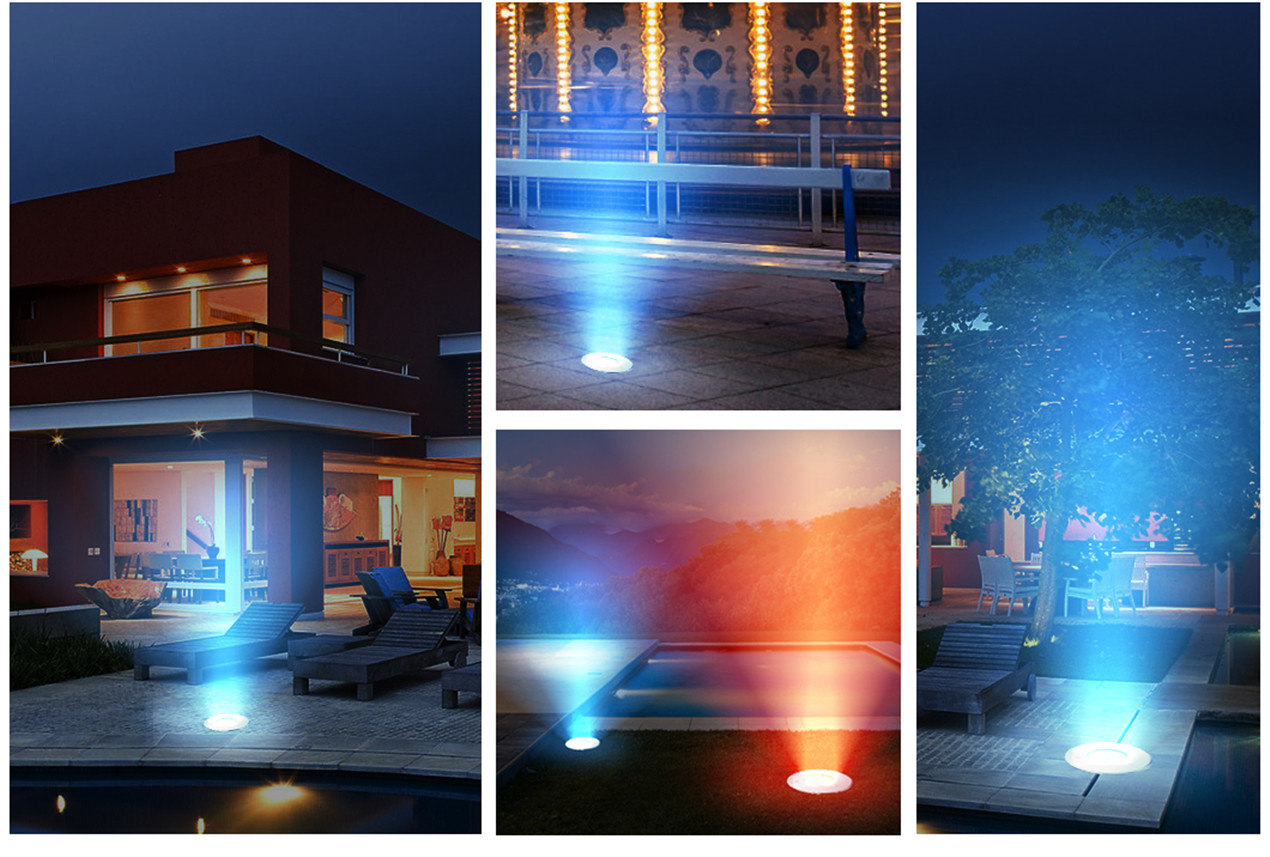What are underground lights?
Underground lights are lamps installed below the ground for lighting and decoration. They are usually buried into the ground, with only the lens or lighting panel of the fixture exposed. Underground lights are often used in outdoor places, such as gardens, courtyards, trails, landscape designs, and building facades, to provide lighting or decorative lighting effects at night. These fixtures are often waterproof and dustproof to withstand the harsh conditions of outdoor environments. Underground lights are usually composed of LED bulbs or other energy-saving light sources, which can provide long-lasting lighting effects and have low energy consumption.
Where are underground lights generally used?
Underground lights are usually used in outdoor environments, such as gardens, courtyards, terraces, swimming pools, roadsides, etc. They can be used to provide lighting, decorate an environment, or illuminate specific landscape features such as trees or buildings. Underground lights are also commonly used in landscape design and architectural lighting. Since they are installed under the ground, underground lights do not take up too much space when providing lighting effects at night, and they also have a good decorative effect.
What is the difference between underground lights and pool lights?
Underground lights are lamps used in outdoor environments that are installed below the ground and are usually used to illuminate and decorate gardens, courtyards, terraces and other places. Pool lights are specially designed to be installed inside swimming pools to provide lighting and increase the visual effect in the water. Pool lights usually have a waterproof design to ensure they work properly underwater. Therefore, the main difference between inground lights and pool lights is the installation location and purpose: inground lights are installed under the ground, while pool lights are installed inside the pool.
How to install underground lights?
The installation of underground lights generally includes the following steps:
Plan the location: To determine the installation location of underground lights, you usually need to consider the lighting effect and gardening layout.
Preparation work: Clean the installation location, ensure the ground is flat, and confirm whether there are other pipelines or facilities underground.
Digging holes: Use tools to dig holes in the ground suitable for underground lights.
Install the light fixture: Place the underground light into the dug hole and ensure that the light fixture is securely installed.
Connect the power supply: Connect the power cord of the inground light and make sure the connection is firm and safe.
Test the lamps: After the installation is completed, test the lamps to ensure that the lighting effect and circuit connection are normal.
Fixing and encapsulation: Fix the position of the underground light and encapsulate the surrounding gaps to ensure the stability and safety of the light fixture.
Please note that these steps may vary by region and specific circumstances, so it is best to read the installation instructions or ask a professional to install it before proceeding.
What do you need to pay attention to when installing underground lights?
When installing underground lights, you need to pay attention to the following points: Safety:
When digging installation holes, make sure to keep a safe distance from underground pipelines and facilities to avoid damage or affect normal use.
Waterproof and dustproof: The installation location of underground lights needs to be waterproof and dustproof to ensure the normal service life of the lamp.
Power connection: Power wiring needs to comply with electrical safety regulations. It is recommended that professional electricians perform wiring installation.
Positioning and layout: The location and layout of underground lights need to be carefully planned before installation to ensure lighting effects and aesthetics.
Material selection considerations: Choose appropriate quality inground lights and durable inground light housings to adapt to different environmental conditions.
Regular maintenance: Regularly check the working status of underground lights to ensure the normal use and safety of the lamps, and replace damaged lamps in a timely manner. If you have more specific installation questions, it is recommended to consult a professional lighting engineer or installation technician for detailed guidance.
What do you need to pay attention to when installing underground lights?
Underground lights may encounter some problems during use.Common solutions include:
The lamp cannot light up: first check whether the power line is connected correctly and whether there is an open circuit or short circuit. If the power supply is normal, the lamp itself may be faulty and needs to be replaced or repaired. Uneven beam or insufficient brightness: It may be caused by improper selection of installation location or improper adjustment of the lamp. You can re-adjust the position or angle of the lamp and select a more suitable lamp according to the actual situation.
How to deal with problems encountered in the use of underground lights?
Lamp damage: If the lamp is damaged by external force, it needs to be stopped immediately and repaired or replaced by a professional.
Waterproof problem: Underground lights need to be waterproof. If water seepage or leakage is found, it needs to be dealt with in time to avoid safety hazards. The light fixture may need to be reinstalled or the seal repaired.
Maintenance: Clean the surface and heat dissipation holes of the lamp regularly, check whether the circuit connections are loose, and ensure the normal operation and safety of the lamp. If the above methods cannot solve the problem, it is recommended to contact professional lighting maintenance personnel for inspection and repair.
Post time: Dec-20-2023



